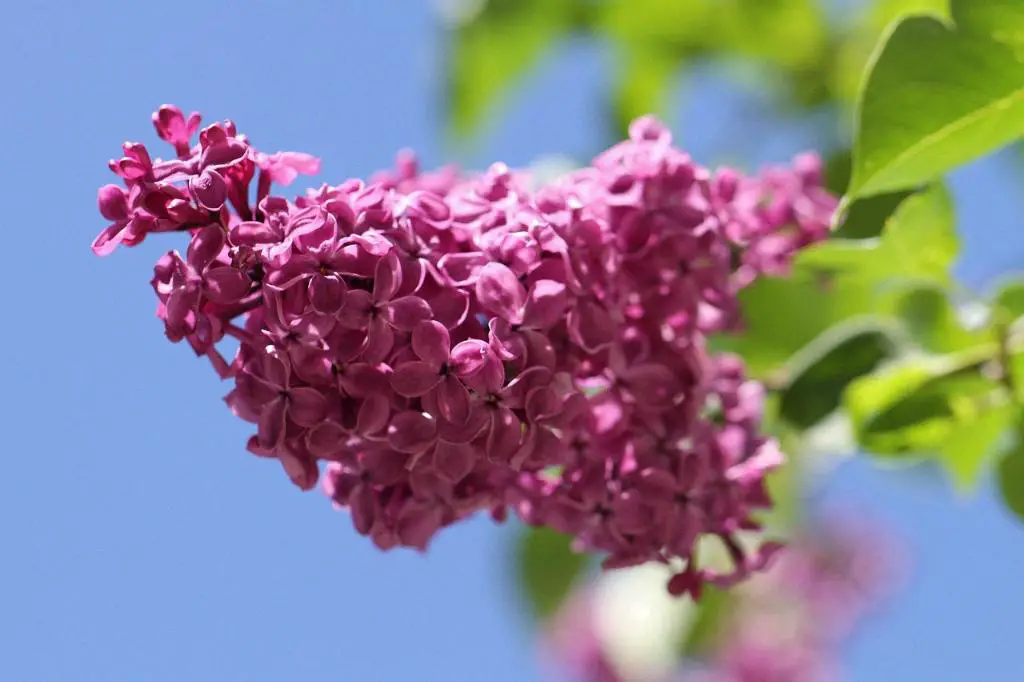When it comes to growing a beautiful lilac bush, the first step is proper planting. Optimal times for planting are in the spring or fall because the warm soil aids in robust root growth. Begin by digging a hole that is at least twice the diameter of the nursery container and around three inches deeper. Ensure the roots are spread out and then backfill with the original soil.
Choosing the Right Location
Location is key when aiming for a thriving lilac bush. Select a spot that receives ample sunlight, ideally around six to eight hours per day. The soil should be well-drained to prevent waterlogged roots. Lilacs also prefer slightly alkaline soil with a pH level between 6 and 7.
Pruning and Maintenance
Regular pruning is essential for the health and appearance of your lilac bush. Prune right after the flowering season to encourage new growth and blossoms for the next year. Remove dead or damaged branches to promote air circulation and prevent diseases.
Watering and Fertilizing
Proper watering is crucial, especially during the initial establishment period. Provide regular watering, ensuring the soil remains moist but not waterlogged. Fertilize your lilac bush in the early spring with a balanced fertilizer to support healthy growth.
Pest and Disease Control
Keeping an eye out for common pests like aphids and powdery mildew can help preserve the health of your lilac bush. Regularly inspect the leaves and stems for any signs of infestation or disease, and take appropriate measures to address them promptly.
Winter Care
Prepare your lilac bush for winter by refraining from late-season fertilization to avoid stimulating new growth vulnerable to frost damage. Mulch around the base of the plant to insulate the roots and protect them from extreme temperatures.
Propagating Lilacs
If you wish to expand your lilac collection, consider propagating them through methods such as division, cuttings, or layering. Each method has its own requirements and procedures, so choose the one that best suits your preferences and resources.
Choosing Lilac Varieties
When selecting lilac varieties for your garden, consider factors such as bloom color, fragrance, and size. Common lilac varieties include the classic Syringa vulgaris, as well as newer cultivars like ‘Miss Kim’ and ‘Bloomerang’ for extended blooming periods.
Harvesting Lilac Blooms
Lilac blooms not only add beauty to your garden but can also be harvested for floral arrangements or potpourri. Cut blooms early in the morning when they are most fragrant, and place them in a vase with water to enjoy their scent indoors.
Benefits of Growing Lilacs
Growing lilacs goes beyond their aesthetic appeal, as these fragrant shrubs attract pollinators like butterflies and bees to your garden. Their scent can also have a calming effect, making them a delightful addition to outdoor spaces.
Common Lilac Problems
Despite their beauty, lilacs can face challenges such as leaf spots, bacterial blight, or root rot. Identifying these issues early on and taking appropriate measures through proper care and maintenance can help preserve the health of your lilac bush.
Enjoying Your Lilac Bush
With proper care and attention, your lilac bush will reward you with bountiful blooms and a sweet fragrance that enhances your outdoor environment. Take pleasure in watching your lilac flourish and bloom each season, bringing joy to both you and your surroundings.

